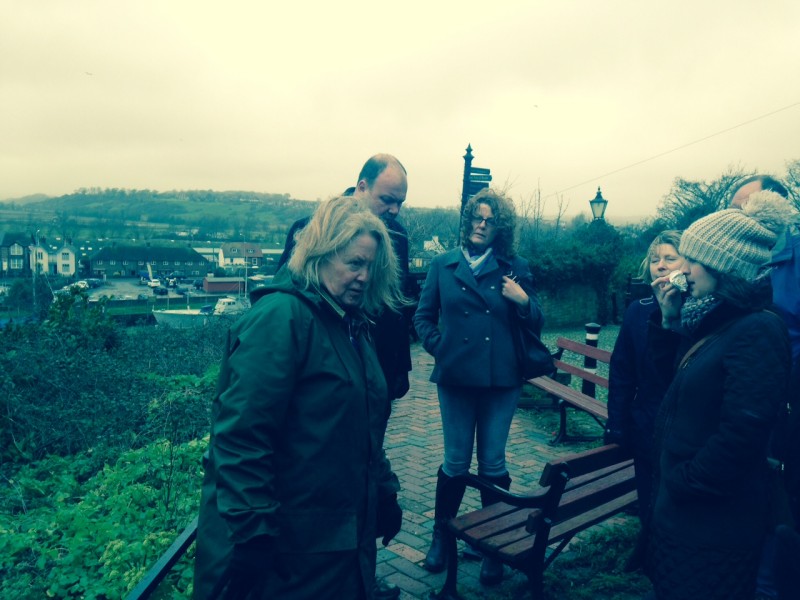Jane Fraser Hay, a registered “Blue Badge” tour guide, led a fascinating tour around ancient Rye on Sunday, February 21, as part of Scallop Week starting with the view (above) from the Hope Anchor lookout towards Winchelsea, and to0 Camber Castle which protected Rye’s shipping in the Tudor and Elizabethan periods when it was a major English port.
She dispelled some popular myths – for example the church bells from St Mary’s were never raided and taken back to France, only for Rye townsfolk to sail over to Normandy steal them back a few months later.
But she told us some other, even more incredible stories. For example, although we all know that old Winchelsea was destroyed by great storms at the end of the 13th century, we were astonished to learn that no trace of the original settlement had ever been discovered, so its true location on the Marsh is uncertain.
The storms also diverted the course of the Rother, which shifted for miles, from New Romney, assuring the viability of Rye’s harbour for some centuries to come.
We spent some time looking at St Mary’s examining the joins between the original Norman church and the later part, built in the 15th century after a series of raids by the French had culminated in a great fire which destroyed a large part of the town.
It was interesting to learn that Fletchers by the Town Hall used to be the residence of the Catholic clergy and the original front door can be seen down an alley to the left of the current entrance.
In Church Square it was fascinating to learn that the apparently-smart Georgian houses to the right of the gloriously half timbered ancient St Anthony on the corner, actually date from the same period, but their facades were remodelled centuries later when the Tudor style was deemed unfashionable.
Apparently these houses still have their magnificent medieval interiors, contrasting with their cool, smart exteriors.
Jane started off the tour with about 15 people, but an hour and a half later, she had gathered almost twice as many followers, despite the drizzling and cold weather.
[Editor’s note: The dividing line between history and legend can be a narrow one though and, while it seems unlikely that St Mary’s huge, heavy bells could have been kidnapped in a raid, quite a few details are asserted about the raid which (allegedly) brought them back.
Tales about “pirates” also depend on your standpoint. The Spanish called Sir Francis Drake a “pirate”, but Queen Elizabeth the First called him a privateer and shared his costs and his profits. One person’s pirate is another’s mercenary or ally, and the French often had Spanish “allies” on cross-Channel raids – so talk in Rye about “pirates” may need to be qualified by asking “ours” or “theirs”.
And some centuries later one man’s “smuggler” was another person’s brandy supplier – from a “tax haven” in the Channel Islands possibly.
One thing Jane said rang a chord though. Rye, like Winchelsea – and other ports, has its fair share of cellars, as well as “secret” passageways and hidey-holes, but – unlike Winchelsea – we do not seem to make as much of them as we might. We exploit some of our history, but there is much, much more to take advantage of – as only a lifetime away, Rye was the front line in a war and two major aerial battles were fought – in 1940 and 1944.
And Winchelsea may find its old self too as last year a Southampton University team were conducting a Winchelsea Harbour Geotechnical Survey – and Old Winchelsea may actually be located]
Photo: Seana Lanigan



